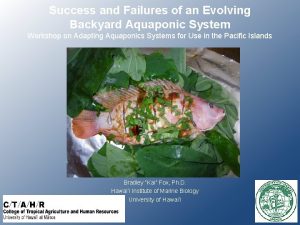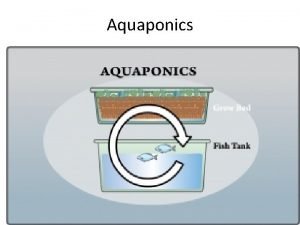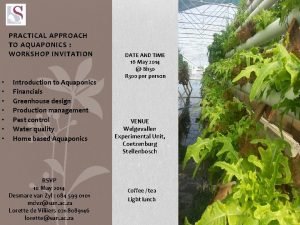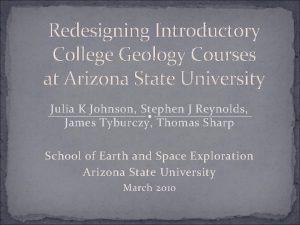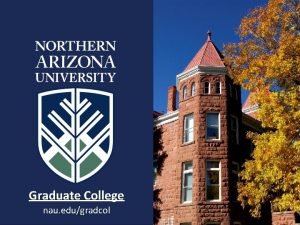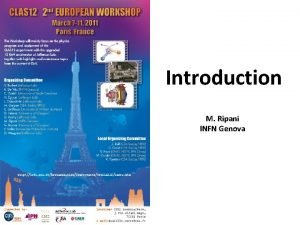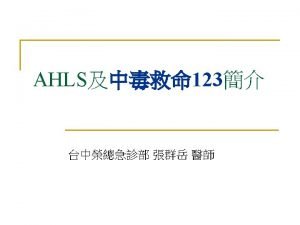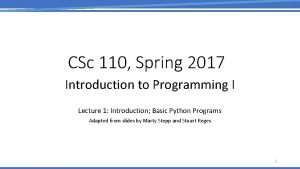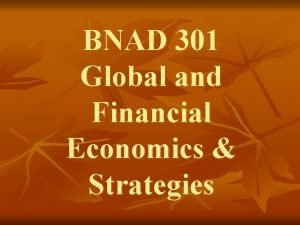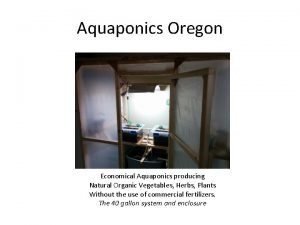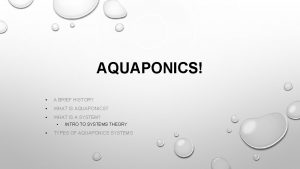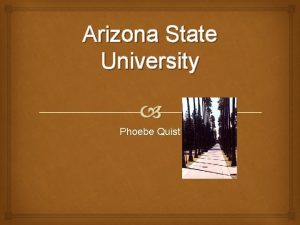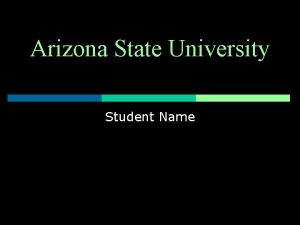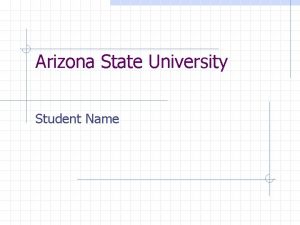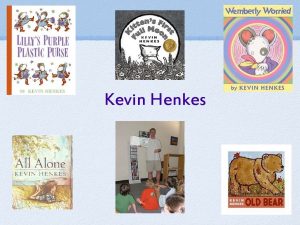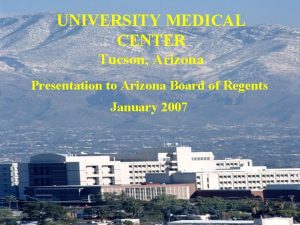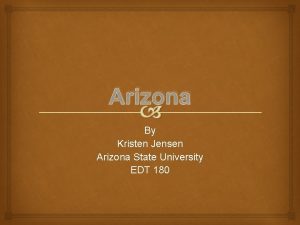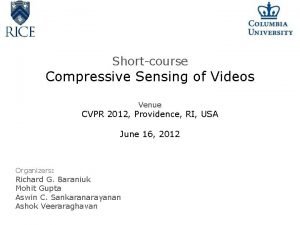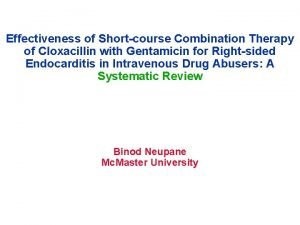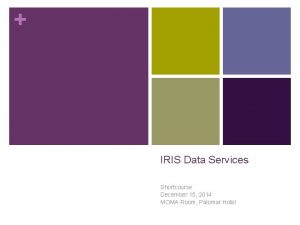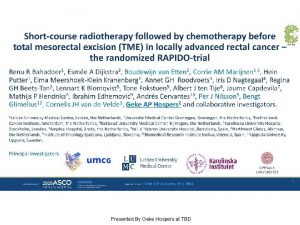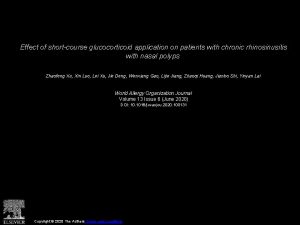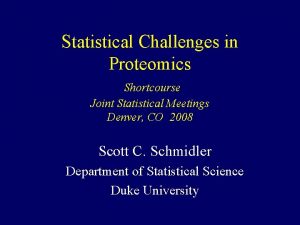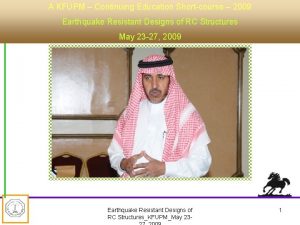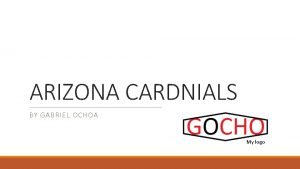Aquaponics shortcourse at the University of Arizona Kevin







































![UAAQ CEAC Water Chemistry F Nutrient Deficiency Succession – [ Fe+, Mn+, Mo+] < UAAQ CEAC Water Chemistry F Nutrient Deficiency Succession – [ Fe+, Mn+, Mo+] <](https://slidetodoc.com/presentation_image_h/82838547fcd44a821df98e5e9bb83667/image-40.jpg)







- Slides: 47

Aquaponics short-course at the University of Arizona Kevin Fitzsimmons, Jason Licamele, Eric Highfield University of Arizona 6 April 2011

Trends in food markets F Demand for more locally grown, organic foods F Increasing demand for vegetables and fish for health reasons F Need to increase economic and environmental efficiency (energy, water, land area, recycling of nutrients)

Global food crisis Rapidly increasing population F Diversion of foods to bio-fuels F Increased costs for water, fertilizer, fuel F Multiple demands for farmland (urban sprawl, industrial and mining, solar and wind generation, wildlife conservation, watershed protection, global warming, etc. ) F Demand for locally produced food F

Need new model for food production F Green Revolution – huge increase in food production, but heavy reliance on irrigation, fuel and fertilizer. F Blue Revolution – almost 50% of seafood is farm raised, but many environmental impacts (effluents causing eutrophication, algae blooms, cage and raft conflicts with other users in oceans, bays and lakes)

Development of hydroponics and aquaculture F Fast growing sectors of global food production F Hydroponics is more efficient use of water and nutrients, controls the environment and reduces use of pesticides and herbicides. F Aquaculture is more efficient production of domesticated aquatic animals and plants.

Past Projects F The Land – Disney World, Florida F Biosphere 2 – Tucson, Arizona F High school education F Commercialization

Disney World – EPCOT – The Land F University of Arizona provided technical design, layout, and training of staff. F Selected hydroponics and aquaculture as two critical food production systems for the future.

Disney World – EPCOT – The Land F 30, 000 guests a day learn about hydroponics, aquaculture, tilapia, and advanced farming techniques F Products are served in the Good Turn Restaurant

Development trials for Biosphere 2 F Biosphere 2 – A one hectare greenhouse. Completely sealed, with eight people living inside for two years.

Early trials for Biosphere 2 University of Arizona provided overall technical support and designed the food system. F Intensive food production F Healthy foods with minimal need for external inputs F Replicated trials with tilapia and lettuce F

Various growing techniques F Growing in gravel/biofilter F Growing boards in floating

Density and micronutrient trials F Low density of fish F High density of fish

Nutrient film technique F Growing in troughs/gutters with flowing water

Nutrient film technique F Flood and drain version in troughs/gutters

Fish and grain crops Tilapia and barley Nutrient dynamics in recirc Determined that integrated fish and irrigated crops were most efficient food production system for Biosphere 2

Educational systems in high schools Fish instead of traditional farm animals Hydroponic vegetables and ornamental flowers

Water chemistry F p. H F Conductivity F Dissolved solids F Suspended solids F Oxygen

Carbon Cycle digestion and respiration + 3 O 2 C 6 H 12 O 6 sugars and other organics anaerobes and methanogens Photosynthesis 6 H 2 O + 6 CO 2 water and carbon dioxide CH 4 + COx C 6 H 12 O 6 + 3 O 2 sugars and other organics and oxygen

Carbonate Cycle CO 2 + H 2 O H 2 CO 3 H+ + HCO 3 - carbon dioxide dissolved in water carbonic acid bicarbonate ion H+ + CO 32 carbonate ion

Carbonate cycle

Nitrogen Cycle F Ammonia F Nitrite F Nitrate F De-nitrification

Nitrogen cycle in aquatic systems

Nitrogen cycle F Nitrogen is often a limiting element in freshwater aquatic system F Adding nitrogen will cause rapid increase in primary productivity F Nitrogen in anaerobic sediments - denitrification (reduction to NH 3 or N 2 gas)

UAAQ CEAC Nitrogen Mass Flow F Nitrogen Mass Flow – Introduced via feed – Input: 108 g nitrogen / day F Oxygen – Consumption u u u Fish Plant root zone Plant respiration – Generation u u Plant photosynthesis Microalgae / Phytoplankton photosynthesis

Phosphorus cycle Phosphorus and orthophosphate. Organic P decomposes and releases PO 4, taken up by algae and plants or adsorbs to clay particles and precipitates. Anaerobic conditions can rerelease P to water. Wetland Ecosystem Management

Tilapia and other fish F Oreochromis species F Catfish F Koi F Yellow perch and bluegills F Sturgeon and ornamental fish

Fish feed as nutrient sources F Fish feed is the basic input for nutrients to fish and plants F Protein is source of nitrogen for plants F Phosphorus and potassium from fishmeal, bone meal, or feather meal F Micronutrients from vitamin and mineral premixes in fish feed

UAAQ CEAC Aquaponic Inputs F Inputs: – Water – Star Milling Co. u 1/8” Floating Tilapia Feed – Dolomite 65 Ag u u Ca. CO 3 46. 0% Mg. CO 3 38. 5% Ca 22. 7% Mg 11. 8% – Biomins u u u Biomin Fe+ (5%) Biomin Mn+ (5%) Biomin Zn+ (7%) – Nutrient Content Analysis Crude Protein 35% Crude Fat 5% % N 5. 97 Crude Fiber 3. 5% % P 1. 53 Ash 9% % K 1. 46 % Ca 1. 61 % Mg 0. 26 % Na 0. 24 % S 0. 46 mg/L Cu 15 mg/L Zn 143 mg/L Mn 93 mg/L Fe 461 mg/L B 18 FISH FEED

Organic micronutrients • Biomins u Biomin Fe+ (5%) u Biomin Mn+ (5%) u Biomin Zn+ (7%) u Biomin Calcium is created using an encapsulation (chelating) of the mineral calcium with glycine and natural organic acids. u Biomin Z. I. M is a true amino acid chelated multimineral. The chelating agent is mainly glycine, the smallest amino acid commonly used by and found in plants.

System design F For fish – tanks vs raceways F For plants – variety F Gravel and sand beds F Floating rafts F Gutters and trays

Tilapia and lettuce

Lettuce Plant F Lettuce (Lactuca sativa) – Butterhead variety – Quick turnover u 5 weeks – Cultivars Rex u Tom Thumb u

Varieties of Romaine and Bibb

Data collection and analysis Light measurements (PAR) Computer monitoring

Nutrient Balance F Nutrient Balance – Feed u u u 32% Protein 2 -4% System Biomass FCR 2: 1 – Filtration u u Clarifier Nitrification – Hydroponics u u Nutrient uptake Water Chemistry N, TAN, NH 4, NO 2, NO 3, K, P, Ca, Fe, p. H, alkalinity, T, EC

Aquaponic Inputs F Inputs: – Water – Fish Food u Star Milling Co. u 1/8” Floating Tilapia Feed – Dolomite 65 Ag u u Ca. CO 3 46. 0% Mg. CO 3 38. 5% Ca 22. 7% Mg 11. 8% – Biomins u u u Biomin Fe+ (5%) Biomin Mn+ (5%) Biomin Zn+ (7%) – Nutrient Content Analysis Crude Protein 32% Crude Fat 5% % N 5. 97 Crude Fiber 3. 5% % P 1. 53 % K 1. 46 % Ca 1. 61 % Mg 0. 26 % Na 0. 24 % S 0. 46 Ash 9% FISH FEED mg/L Cu 15 mg/L Zn 143 mg/L Mn 93 mg/L Fe 461 mg/L B 18

p. H & Oxygen F p. H Range Tilapia 6. 5 -9 – Fish = 6. 5 – 8. 5 – Plant = 5. 0 – 7. 5 F Diurnal p. H Flux – Reduce shifts to stabilize p. H u u Shifts can inhibit organism's physiology thus reducing growth Acidic p. H can effect solubility of Fertilizers – Alkalinity u u F Optimal: 75 -150 mg/L Stabilizes p. H ; provides nutrients for growth Dissolved Oxygen – > 4 mg/l (ppm)

UAAQ CEAC Methodology F Data Collection – Fish : Lettuce u u Fish FCR Fish Biomass (1 kg) Plant Wet/Dry Weight Plant Height/Diameter – Lettuce quality u u Apogee CCM-200 Chlorophyll Concentration Index (CCI) – Relative chlorophyll value – Compare a cultivar of lettuce growing in different systems

UAAQ CEAC Biomass Density F CEAC GH#3118 – Tilapia Density u u 0. 04 – 0. 06 kg/L 2% Biomass / day 1. 6 – 1. 8 kg feed / day Harvest weight 1 kg – Lettuce u u u 32 plants / m 2 6” off center Harvest head wet weight 150 -200 grams
![UAAQ CEAC Water Chemistry F Nutrient Deficiency Succession Fe Mn Mo UAAQ CEAC Water Chemistry F Nutrient Deficiency Succession – [ Fe+, Mn+, Mo+] <](https://slidetodoc.com/presentation_image_h/82838547fcd44a821df98e5e9bb83667/image-40.jpg)
UAAQ CEAC Water Chemistry F Nutrient Deficiency Succession – [ Fe+, Mn+, Mo+] < – [Ca+, Mg+]< – [Zn+] F Hydroponic Water Parameters – – p. H 6. 5 -6. 7 EC 1. 5 – 2. 0 DO 4 -7 mg/L T = 23 -25 o. C CEAC Lettuce GH#3118 Target NITROGEN Ammonia NH 3 -N 0 0 Nitrate NO 3 -N 180 50 Boron (B) 0. 35 <1 Calcium (Ca) 200 60 Copper (Cu) 0. 05 <0. 05 Iron (Fe) 2. 4 2 Magnesium (Mg) 40 20 Manganese (Mn) 0. 55 0. 5 Molybdenum (Mo) 0. 05 PO 4 -P 50 50 Potassium (K) 198 150 Sulfate (SO 4)-S 52 20< >100 0. 34 0. 3 Water Chemistry (mg/L) Zinc (Zn)

Data and video live on Internet http: //ag. arizona. edu/tomlive/gh 3118_idx. html

UAAQ CEAC Environmental Data F Set Points: – Hydroponic Treatment u u u Exp. 1 Exp. 2 Exp. 3 Day Tair = 20 - 22 o. C Night Tair = 16 - 18 o. C TH 2 O = 23 - 25 o. C p. H = 6. 5 - 6. 8 DO = 4 - 7 mg/L UAAQ 2009 Water Parameters Exp. 1 Mean Water Temperature p. H 24. 29 o. C 6. 75 Dissolved Oxygen 5. 89 mg/L Electrical Conductivity 0. 97 d. S/cm UAAQ 2009 Water Parameters Exp. 2 Mean Water Temperature p. H 24. 22 o. C 6. 73 UAAQ 2009 Environmental Data Exp. 2 1 Mean Daily PAR 19. 33 16. 60 moles/m 22 Total PAR Exp. 2 924. 00 829. 82 moles/m 22 Mean Night TTaa 17. 14 17. 09 o. C Mean Day TTaa 21. 56 21. 19 o. C Dissolved Oxygen 6. 74 mg/L Daily Mean TTaa 19. 35 19. 14 oo. C Electrical Conductivity 0. 93 d. S/cm Daily Mean RH% 60. 85% 59. 47%

UAAQ CEAC Nitrogen Mass Flow F Fish Feed – % N = 5. 97 u u F 1800 grams/day 107 grams nitrogen/day Sludge – N = 3. 38% per g dry weight u u F 5 Liters day produced Collect dry weight / day Fish – 27% nitrogen retention F Lettuce – Samples to be analyzed F Water – 40 -60 mg/L Nitrate Exp. 1 Exp. 2 Exp. 3

UAAQ CEAC Water Chemistry F Macronutrients – – Accumulation reaching steady state Calcium and magnesium supplementation u F Experiments 2 -8 Exp. 1 Exp. 2 Exp. 3 Micronutrients – Biomin Iron supplementation u – Biomin Zinc supplementation u – Experiment s 4 -8 Experiments 5 -8 Biomin Manganese supplementation u Experiments 6 -8 Exp. 1 Exp. 2 Exp. 3

UAAQ Exp. 2 Aquaponics vs. Hydroponics F Hydroponic Solution – Nitrogen uptake – Experiment 2 Data u 40 -60 mg/L NO 3 -N u 10 -20 mg/L P u 100+ mg/L K

Arizona Aquaculture Website ag. arizona. edu/azaqua

What’s needed next? F Investment in production and more research F Best technologies of ag and aquaculture F Limited governmental regulation F Trained production staff and semi-skilled farming staff
 Why aquaponics fail
Why aquaponics fail Carbon cycle in aquaponics
Carbon cycle in aquaponics Aquaponics financials
Aquaponics financials Arizona state university geology
Arizona state university geology Nau edulouie
Nau edulouie Arizona state university
Arizona state university Bb learn nau
Bb learn nau University of arizona emergency medicine
University of arizona emergency medicine Csc 110 university of arizona
Csc 110 university of arizona Bnad 276 university of arizona
Bnad 276 university of arizona Hát kết hợp bộ gõ cơ thể
Hát kết hợp bộ gõ cơ thể Lp html
Lp html Bổ thể
Bổ thể Tỉ lệ cơ thể trẻ em
Tỉ lệ cơ thể trẻ em Voi kéo gỗ như thế nào
Voi kéo gỗ như thế nào Tư thế worms-breton
Tư thế worms-breton Chúa sống lại
Chúa sống lại Các môn thể thao bắt đầu bằng tiếng nhảy
Các môn thể thao bắt đầu bằng tiếng nhảy Thế nào là hệ số cao nhất
Thế nào là hệ số cao nhất Các châu lục và đại dương trên thế giới
Các châu lục và đại dương trên thế giới Công thức tính thế năng
Công thức tính thế năng Trời xanh đây là của chúng ta thể thơ
Trời xanh đây là của chúng ta thể thơ Mật thư anh em như thể tay chân
Mật thư anh em như thể tay chân 101012 bằng
101012 bằng Phản ứng thế ankan
Phản ứng thế ankan Các châu lục và đại dương trên thế giới
Các châu lục và đại dương trên thế giới Thơ thất ngôn tứ tuyệt đường luật
Thơ thất ngôn tứ tuyệt đường luật Quá trình desamine hóa có thể tạo ra
Quá trình desamine hóa có thể tạo ra Một số thể thơ truyền thống
Một số thể thơ truyền thống Bàn tay mà dây bẩn
Bàn tay mà dây bẩn Vẽ hình chiếu vuông góc của vật thể sau
Vẽ hình chiếu vuông góc của vật thể sau Biện pháp chống mỏi cơ
Biện pháp chống mỏi cơ đặc điểm cơ thể của người tối cổ
đặc điểm cơ thể của người tối cổ Thứ tự các dấu thăng giáng ở hóa biểu
Thứ tự các dấu thăng giáng ở hóa biểu Vẽ hình chiếu đứng bằng cạnh của vật thể
Vẽ hình chiếu đứng bằng cạnh của vật thể Phối cảnh
Phối cảnh Thẻ vin
Thẻ vin đại từ thay thế
đại từ thay thế điện thế nghỉ
điện thế nghỉ Tư thế ngồi viết
Tư thế ngồi viết Diễn thế sinh thái là
Diễn thế sinh thái là Các loại đột biến cấu trúc nhiễm sắc thể
Các loại đột biến cấu trúc nhiễm sắc thể Số.nguyên tố
Số.nguyên tố Tư thế ngồi viết
Tư thế ngồi viết Lời thề hippocrates
Lời thề hippocrates Thiếu nhi thế giới liên hoan
Thiếu nhi thế giới liên hoan ưu thế lai là gì
ưu thế lai là gì Hổ sinh sản vào mùa nào
Hổ sinh sản vào mùa nào
